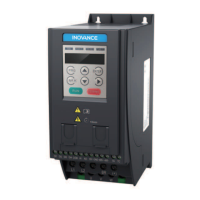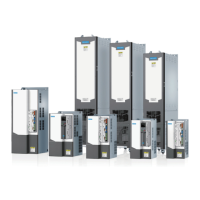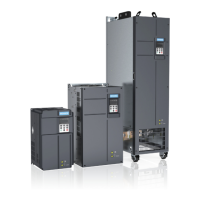Parameter Groups
‑97‑
6: Multi‑reference
In multi‑reference control mode, different combinations of DI terminal states
correspond to different frequency references. The four multi‑reference terminals
can provide 16 state combinations, corresponding to 16 reference values.
7: Simple PLC
Simple PLC is a multi‑speed running command that can control the running time
and the acceleration and deceleration time. Parameters FC‑00 to FC‑15 are used
to set the values of each frequency. FC‑18 to FC‑49 are used to set the running
time and the acceleration and deceleration time of each frequency. Up to 16
speeds can be set.
8: PID
PID is selected as the main frequency. PID control is a general process control
method. PID control is used to form a closed‑loop system in which each
controlled variable is stabilized at the target level through proportional, integral,
and differential calculation of the difference between the feedback signal and the
target signal of the controlled variable. Generally, PID output can be used as the
frequency reference for on‑site closed‑loop process control applications, such as
closed‑loop pressure control and closed‑loop tension control.
9: Communication
The main frequency is set through communication. Frequency reference is input
through remote communication. The AC drive must be equipped with a
communication card to communicate with the host controller. It is suitable for
remote control or centralized control systems of multiple equipment.
10: Reserved
F0-05
Range selection of auxiliary frequency reference Y upon superposition
Address:
0xF005
Min.:
0
Unit:
‑
Max.: 1 Data type: UInt16
Default:
0
Change: In real time
Value Range:
0: Relative to the maximum frequency
1: Relative to the main frequency X
Description
0: Relative to the maximum frequency
The auxiliary frequency at superposition is equal to the auxiliary frequency source
range (F0‑06) multiplied by the maximum frequency (F0‑10).
1: Relative to the main frequency X
The auxiliary frequency at superposition is equal to the auxiliary frequency source
range (F0‑06) multiplied by the main frequency X.

